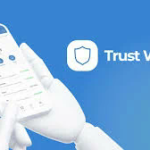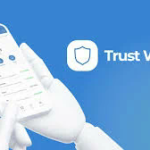Understanding Binance Wallet: A Comprehensive Guide to Cryptocurrency Storage and Management
—
### Introduction
In the world of cryptocurrency, security and efficient management of digital assets is paramount. One of the leading platforms in this sector is Binance, which provides a robust wallet service tailored to the needs of traders and hodlers alike. This article delves into the intricacies of the Binance Wallet, exploring its features, usability, security measures, and the various types of wallets available within the ecosystem. We aim to equip readers with a deeper understanding of the Binance Wallet and its pivotal role in the cryptocurrency landscape.
### What is Binance Wallet?
Binance Wallet is a digital wallet provided by Binance, one of the largest cryptocurrency exchanges globally. It allows users to store, send, receive, and trade a multitude of cryptocurrencies securely. The wallet not only serves as a storage solution but also facilitates the integration of various DeFi (Decentralized Finance) applications, enabling users to interact with decentralized platforms directly from their wallets.
### Types of Binance Wallets
Understanding the types of wallets Binance offers is crucial for effective asset management. There are mainly two types of wallets associated with Binance: custodial wallets and non-custodial wallets.
#### 1. Custodial Wallets
A custodial wallet means that the private keys are held and managed by Binance. Users do not have direct control over the private keys, which are stored on Binance’s secure servers. This type of wallet is convenient for traders who frequently buy and sell cryptocurrencies because the transaction process is faster. Users can easily access their funds directly through the Binance exchange interface.
**Advantages of Custodial Wallets:**
– User-friendly: Easy to set up and manage, making it suitable for beginners.
– Access to trading features: Users can instantly trade without transferring funds to another wallet.
– Security: Binance uses advanced security protocols to protect user funds, including two-factor authentication (2FA).
**Disadvantages of Custodial Wallets:**
– Lack of control: Since users do not hold the private keys, they rely on Binance for the security of their assets.
– Vulnerability to hacks: Exchanges are often targeted by hackers; although Binance has robust security measures, risks remain.
#### 2. Non-Custodial Wallets
In contrast to custodial wallets, non-custodial wallets allow users to have complete control over their private keys and funds. Binance offers a non-custodial solution through the Binance Smart Wallet. Users can manage their assets without relying on the exchange, which can provide an added layer of security.
**Advantages of Non-Custodial Wallets:**
– Full control: Users own their private keys, providing peace of mind over their assets’ security.
– Greater security options: Users can implement their security measures, such as hardware wallets.
– Privacy: Non-custodial wallets generally offer more anonymity as transactions are not directly linked to an exchange account.
**Disadvantages of Non-Custodial Wallets:**
– Responsibility: Users must ensure the safe storage of private keys, as loss of keys means loss of assets.
– Complexity: May require more technical knowledge to navigate and operate effectively.
### Setting Up a Binance Wallet
Creating a Binance Wallet is a straightforward process, but it’s essential to follow the steps carefully to ensure maximum security.
1. **Create a Binance Account**:
– Visit the Binance website and sign up for an account using a valid email address or mobile number.
– Complete the verification process by providing the necessary identification documents.

2. **Enable 2FA (Two-Factor Authentication)**:
– Enhance the security of your account by enabling 2FA. This adds a layer of protection against unauthorized access.
3. **Accessing the Wallet**:
– Log in to your Binance account and navigate to the “Wallet” section.
– From here, you can view your holdings and manage your assets.
4. **Depositing Funds**:
– To deposit funds, click on “Deposit” and select the cryptocurrency you wish to add. Follow the instructions to complete the transaction.
5. **Withdrawing Funds**:
– To withdraw, select “Withdraw,” choose the cryptocurrency, and enter the destination wallet address. Confirm the transaction after checking all details.
### Security Features of Binance Wallet
Security is a critical aspect of any cryptocurrency wallet, and Binance is aware of this necessity. Below are some of the security features offered by Binance Wallet:
1. **Cold Storage**: A significant portion of user funds is stored in cold wallets, which are not connected to the internet, thus reducing the risk of hacking.
2. **Two-Factor Authentication (2FA)**: This is a necessary security measure that requires users to verify their identity through a secondary device, such as a mobile phone, when logging in or executing transactions.
3. **Withdrawal Whitelists**: Users can set up withdrawal whitelists, which restrict withdrawals to whitelisted addresses, adding an extra layer of security against unauthorized transfers.
4. **Regular Security Audits**: Binance conducts regular security audits and employs a dedicated security team to monitor and respond to potential threats.
5. **Insurance Fund**: The Secure Asset Fund for Users (SAFU) is an emergency insurance fund that protects users in the event of unforeseen circumstances.
### Integrating with Binance Smart Chain
The Binance Wallet’s integration with the Binance Smart Chain (BSC) allows users to engage with decentralized applications and services.
#### What is Binance Smart Chain?
Binance Smart Chain is a blockchain network running in parallel to Binance’s native Binance Chain. It supports smart contracts and is compatible with the Ethereum Virtual Machine (EVM), allowing developers to create and deploy decentralized applications (dApps).
**Benefits of BSC:**
– Low transaction fees compared to Ethereum.
– High throughput and fast confirmation times.
– A growing ecosystem of dApps, including DeFi and NFT platforms.
### Using Binance Wallet for DeFi
Decentralized Finance (DeFi) has emerged as a revolutionary sector within the cryptocurrency space, allowing users to lend, borrow, and trade without traditional intermediaries. Binance Wallet provides seamless access to various DeFi applications.
1. **Lending and Borrowing**: Users can lend their cryptocurrencies to earn interest or borrow assets against collateral.
2. **Yield Farming**: By linking their Binance Wallet to compatible DeFi platforms, users can engage in yield farming, where they provide liquidity to earn rewards.
3. **Staking**: Binance Wallet allows users to stake certain cryptocurrencies to earn rewards by participating in the network validation process.
### Conclusion
The Binance Wallet is more than just a storage solution; it is a comprehensive tool that provides users with the features and security needed to navigate the cryptocurrency landscape effectively. Understanding the differences between custodial and non-custodial wallets, as well as utilizing the security features offered by Binance, can significantly enhance users’ cryptocurrency experience.
As the crypto market evolves and integrates further with decentralized finance, having a reliable and user-friendly wallet like Binance Wallet becomes essential for both new and experienced users. Whether it’s trading, staking, or interacting with DeFi protocols, the Binance Wallet empowers users to take control of their digital assets in an ever-changing economic landscape.
With ongoing developments and innovations within the Binance ecosystem, users can expect continued improvements and features that will enhance their cryptocurrency management experience. As with any financial service, it is vital for users to stay informed about security practices and to take individual ownership of their digital assets through diligent management and education.


